Artistic Director: Tang Xin
Taikang Space's summer exhibition Drawing Pogo will open to public on 1st June. During the past centuries, drawing has widely and deeply influenced human's production and life styles and the way to perceive the world. Based on observation and research on contemporary artists' practice, Drawing Pogo indicates the transformation and developing trends in a broader vision. Guest curator Zhou Yi is invited to work with 12 artists providing audience an unique experience and open-border on drawing through mixing image, video, audio, installation, text and light etc. For Taikang Space, this exhibition is also a bold trial on expanding the definition of art scene while focusing on art history research.
Taikang Space's summer exhibition Drawing Pogo will open to public on 1st June. During the past centuries, drawing has widely and deeply influenced human's production and life styles and the way to perceive the world. Based on observation and research on contemporary artists' practice, Drawing Pogo indicates the transformation and developing trends in a broader vision. Guest curator Zhou Yi is invited to work with 12 artists providing audience an unique experience and open-border on drawing through mixing image, video, audio, installation, text and light etc. For Taikang Space, this exhibition is also a bold trial on expanding the definition of art scene while focusing on art history research.
Exhibition Introduction
I don’t have a ready word in Chinese to name specifically “drawing”. “To draw” in Chinese, as a verb is no different from “to paint”. When converted to a noun, it means a picture, which generalizes the category of manmade images, instead of mere drawing. The most commonly seen translations of drawing in Chinese is Baimiao, meaning to depict with line only, or Sumiao, meaning to depict monochromatically, but both are narrowly associated with painting techniques: Baimiao is the preparatory work for Chinese ink painting, and Sumiao the study for Western easel painting, neither corresponding exactly with the broad scope of drawing.
Drawing is a form of visual simulation between the reality and the imagination, not necessarily imitative or requires an audience. Outside the field of art, in a construction drawing or an anatomical drawing, for example, the information value they carry weighs far more than their aesthetic value. It’s wide application maybe the reason why drawing’s viability hasn’t been interpreted the same way as painting has in contemporary art theories, even though both are manmade pictures after all, as how the Chinese language would make no distinction. Da Vinci’s drawing reveals, if it works out the internal mechanism of a real weapon, then it has a very different purpose in mind compared to a painting. If the tradition of painting is to create a window on the wall, like what Alberti famously said, by depicting the world vertically on a easel, drawing is to simulate and to reimagine the world on a table top, in an effort to build a substitute.
Being a useful form in the real world, drawing will naturally adapt to whatever new medium is available and effective. At the beginning of the Industrial Revolution, some draughtsman were able to catch up with the speed of news production thanks to collage --- the needs to share personal opinions were so urgent that they abandoned professional skill in favor of scissors and glue. Their choice seem to prove that the core of drawing is an intellectual endeavor. Nowadays images are much more accessible to anyone with the help of search engine and Photoshop tools that are far more convenient and powerful than actual scissors and glue. On the one hand collage has gone backward and becomes once more “hand-drawn”, aided by a wide variety of techniques, which constructs and beautifies, producing a seamless naturalistic picture. Simultaneously, in praise of the crude cut-and-paste style most offensive to senses, “hua zhi gan ren" (heartfelt picture quality) a phrase gained instant popularity on the Internet. The age of media will no doubt further invalidates medium, two dimensionality and hand participation as distinctive features of drawing. Conversely, what goes on the traditional paper may not necessarily a continuation of what went before.
What does drawing mean today? Removing the outdated features of medium and dimensionality, we are left with that obscure purpose. While the art world engages itself in the discussion of the death of painting, pop culture is obsessed with drawn images.
Writers or animators of the Tanbi style do not take photos, thus allowing no image that falls short of perfection to have a chance to spread, and due to the aesthetic mysophobia on the part of this particular audience group, this literary category won’t allow adaption into feature films. I recall the mental struggle with whether I would go to see the live-action adaptation of Ghost in the Shell movie when it came out. I come to the conclusion that no reality, no matter how well it plays the depicted world, can be as spotless in every angle, that is the norm. This is why we tend to wish for the impossible on one hand and worry about ruining the ideal on the other. As the technology of virtual reality approaches the versatile range of flat image, it will begin to outperform our expectations from time to time. The internal projection is that the awareness of impossibility is the norm. The occasional correspondence between the virtual and the real would always come with shock and astonishment. Such everlasting empathy, without exception, can be found in the scribbles we made on the margins of textbooks in our school days. The reason is that, to satisfy our constant wishes to flee (to live in another world), drawing is the path to rid us of this body.
I remember reading “Thoughts on Art and Life”, what Da Vinci wrote to himself repeatedly about creating a presence with images that words and music were inferior to. What drawing is today has a lot of bearing on our needs of this nature. In an recent interview on the Hollywood version of Ghost in the Shell (http://www.gizmodo.jp/2017/04/oshii-mamoru-interview.html), Mamoru Oshii complained that by and by the movie was falling behind computer games. In a game there is never “The End”, nor is it necessary, he believed, saying that the game is a brand new form that does not need an ending. Creating an open world structure and roles are enough. The rest can be left to the players to make up their own stories... A game will give each player different experiences when they are done. 100 players will end up with 100 different stories. He is absolutely right there. Whatever we do now, we must keep it in mind.
Zhou Yi
May, 2017
*Exhibition poster and press release:
 Exhibition poster
Exhibition poster Press release
Press release
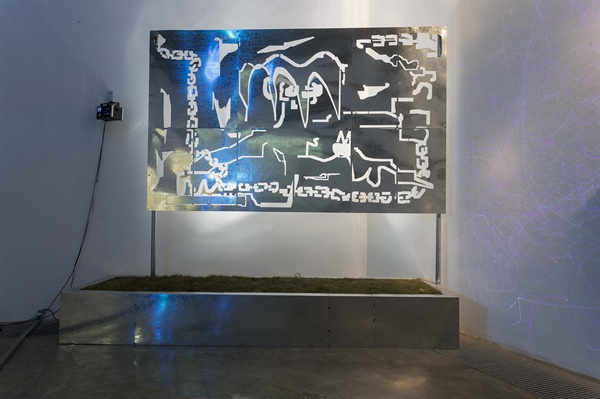 Installation View
Installation View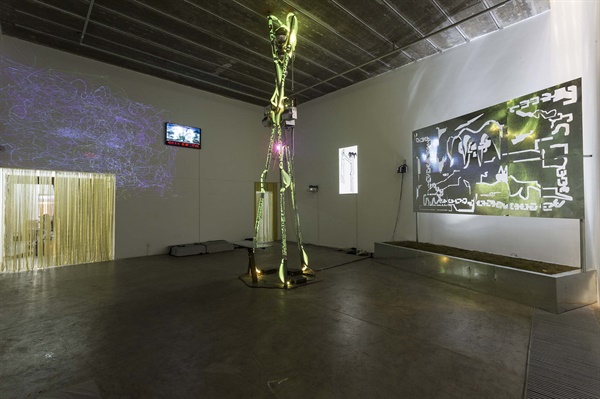 Installation View
Installation View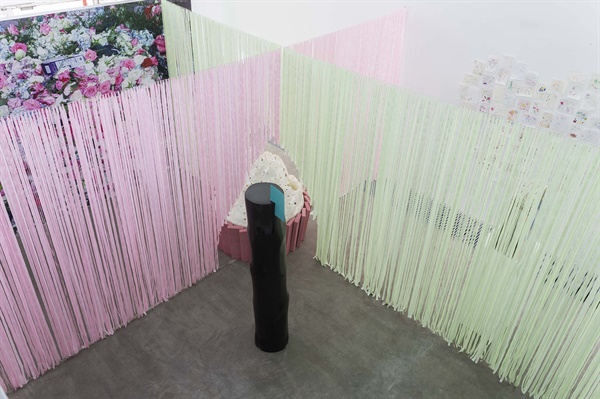 Installation View
Installation View Installation View
Installation View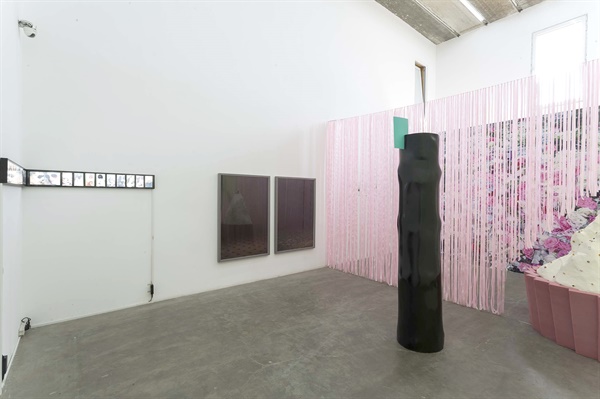 Installation View
Installation View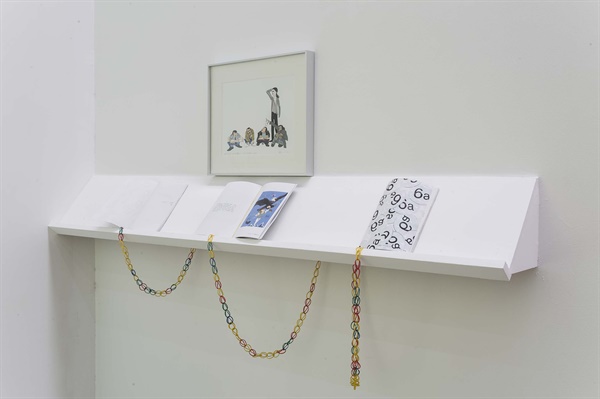 Installation View
Installation View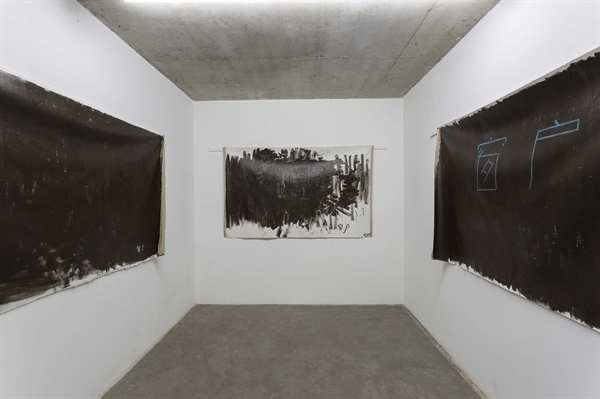 Installation View
Installation View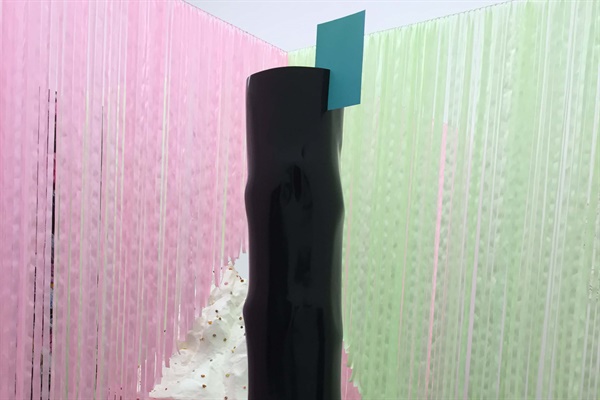 A Lacquered Log Inserted with One Sheet of Green Paper, Zhang Miao, Log, Brass, Stainless Steel, Lacquer, Paper, 50cm(Diameter)x230cm, 2017
A Lacquered Log Inserted with One Sheet of Green Paper, Zhang Miao, Log, Brass, Stainless Steel, Lacquer, Paper, 50cm(Diameter)x230cm, 2017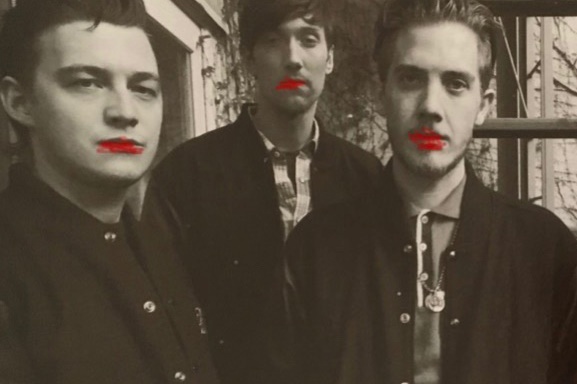 The Second Sex, Zhang Da, iPhone Drawings, Light Box, 17.6x203.6x4cm, 2017
The Second Sex, Zhang Da, iPhone Drawings, Light Box, 17.6x203.6x4cm, 2017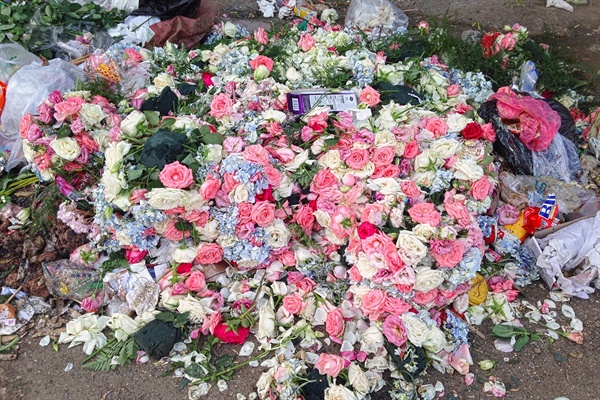 News from Nowhere (Fried Golden Flower), Ye Funa, Interactive Installation, Dimension Variable, 2013
News from Nowhere (Fried Golden Flower), Ye Funa, Interactive Installation, Dimension Variable, 2013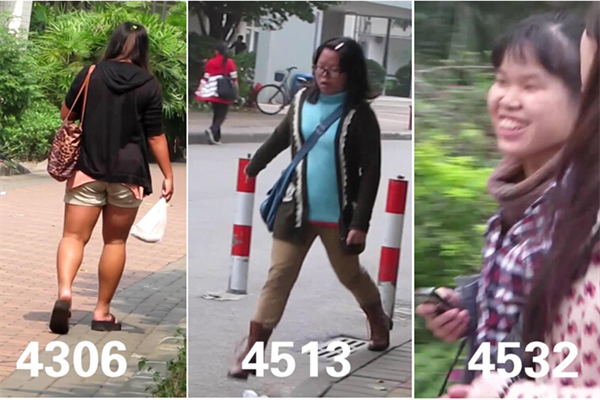 Uglier and Uglie, Song Ta, Single Channel Video, 425’12’’, 2013
Uglier and Uglie, Song Ta, Single Channel Video, 425’12’’, 2013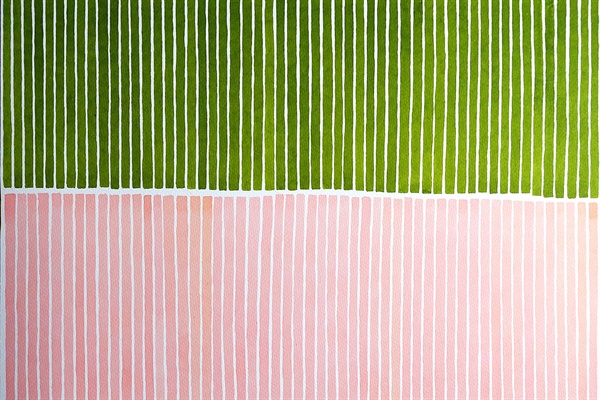 Untitled Drawing in Space, Nabuqi, Color Ribbons, Steel Cable, Dimensions Variable, 2017
Untitled Drawing in Space, Nabuqi, Color Ribbons, Steel Cable, Dimensions Variable, 2017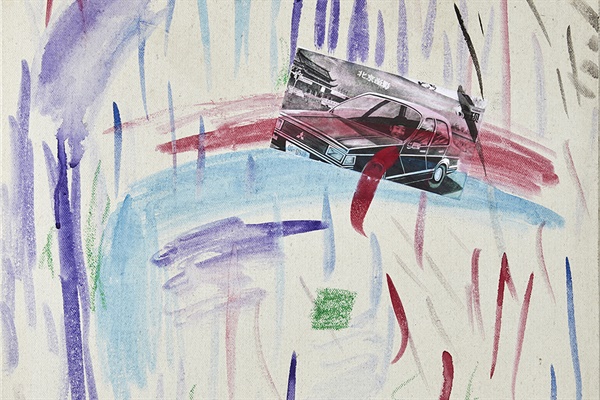 Message, Liu Ding, Painting Installation (Six Paintings, One Letter), Dimension Variable, 2016
Message, Liu Ding, Painting Installation (Six Paintings, One Letter), Dimension Variable, 2016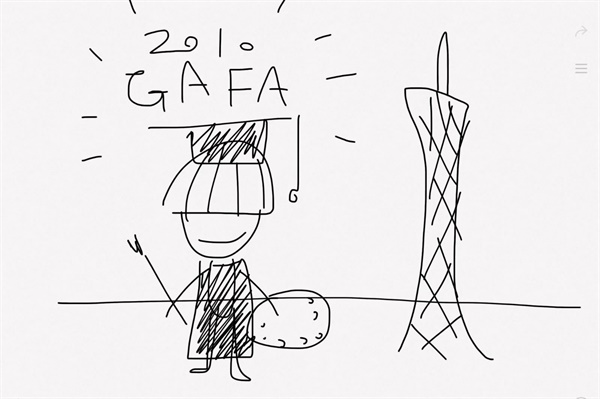 Self-Introduction, Lin Aojie, Color and Sound, 20min, 2016
Self-Introduction, Lin Aojie, Color and Sound, 20min, 2016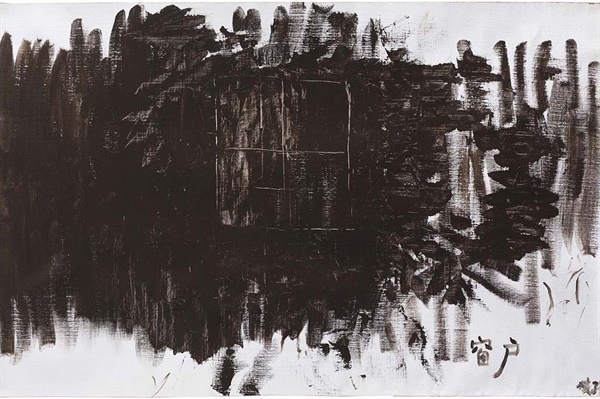 Window (田), Acrylic on Canvas, 125x205cm, 2012, LGH0593
Window (田), Acrylic on Canvas, 125x205cm, 2012, LGH0593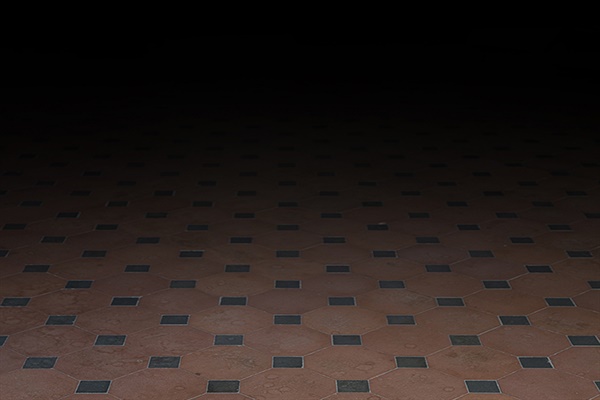 Interior, Li Weiy, Installation, 84x126cmx4, 2017
Interior, Li Weiy, Installation, 84x126cmx4, 2017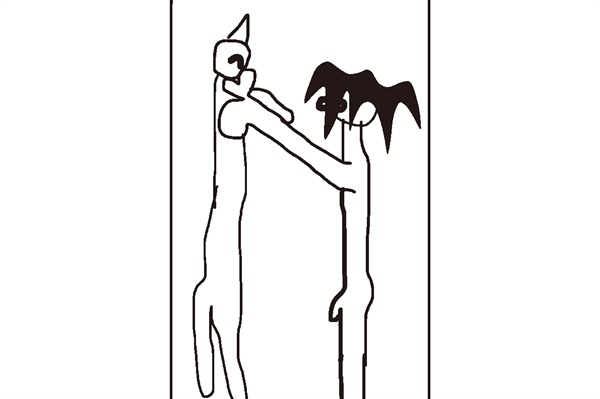 House Cat & Feral Cat, Jin Ningning, Digital Drawing Output (Inflatable Figure, Cut Metal Tubing, Laser Drawing, Optic Fiber, Cutout Sticker), Dimension Variable, 2017
House Cat & Feral Cat, Jin Ningning, Digital Drawing Output (Inflatable Figure, Cut Metal Tubing, Laser Drawing, Optic Fiber, Cutout Sticker), Dimension Variable, 2017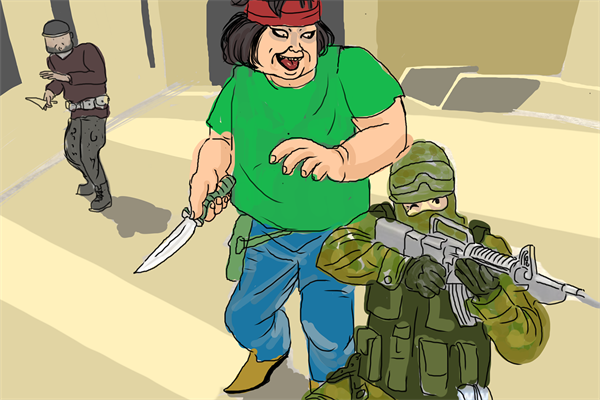 Poster of the Six Arts, Dong JingiPad, iPad Drawing Printout, 22 Pages, 21x14.8cm, 2012-2013
Poster of the Six Arts, Dong JingiPad, iPad Drawing Printout, 22 Pages, 21x14.8cm, 2012-2013 Test It Now, Dong Dawe, Scrapbook, Dimensions Variable, 2007-2011
Test It Now, Dong Dawe, Scrapbook, Dimensions Variable, 2007-2011





